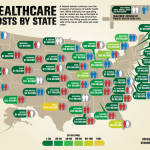For David Culpepper, the deciding factor was his fiancée
Playfully telling the 59-year-old executive she didn’t want wedding pictures “with that big old saggy chin.” On Dec. 31, the Virginia businessman got rid of it, undergoing a face-lift and chin implant in the office of New York plastic surgeon David Hidalgo.

Women account for the majority of cosmetic procedures, but more men are opting for plastic surgery and other enhancements to lift droopy necks, excise excess body fat, and pin back protruding ears.
Younger men are increasingly viewing cosmetic procedures—generally not covered by insurance—as an acceptable way to make themselves more attractive, or correct embarrassing or unmanly features.
Thanks to advancements in techniques, surgeries that once required a hospital stay are now done on an outpatient basis, with less time needed for recovery. Surgeons say this appeals to men who don’t like the idea of taking lots of time off for an elective procedure.
Newer, minimally invasive, temporary treatments such as Botox injections and dermatological fillers are intended to create subtle changes such as erasing a few wrinkles. They can be done during a quick office visit.
“Men are figuring out what women have long known—that appearance really does matter,” says David Sarwer, an associate professor at the University of Pennsylvania who conducts research on the psychological aspects of cosmetic and reconstructive surgery for its Center for Human Appearance, an academic center bringing together plastic surgeons, dermatologists and psychologists.
Men are motivated by competitive issues such as maintaining an edge in a youth-dominated work environment, Dr. Sarwer says, and may seek procedures after a divorce, when they are entering the dating scene again. Baby Boomers make up a significant proportion of cosmetic surgery clients.
The number of men who had cosmetic procedures rose 2% to more than 1.1 million last year, says the American Society of Plastic Surgeons, whose members practice both cosmetic and reconstructive surgery. This lags the 5% increase among women, but growth in several particular procedures was markedly greater among men: Face-lifts increased 14%, the number of men who opted to trim away excess fat with liposuction rose 7%, while the number of eyelid surgeries increased 15%. By contrast, only 9% more women had face-lifts in 2010 and the number of women undergoing liposuction rose 2%. Eyelid surgeries for women increased 3%.
Younger men and teens often opt for surgery that will give them a more masculine appearance. For example, nearly 75% of the 18,000 men who underwent a procedure known as gynecomastia—male breast reduction—were between the ages of 13 and 19.
Physicians are all too happy to take on male patients. With a tough economy, plastic-surgery procedures overall remain 18% below 2000 levels. Although minimally invasive skin treatments and fillers are up 110% since a decade ago thanks to a flood of new products, last year those treatments rose just 5%.
Some studies indicate men are less satisfied than women after cosmetic surgery, and doctors say it’s important to manage their expectations. “Men are sometimes not as tolerant of pain and discomfort, and sometimes don’t articulate what they want as well as women,” says Jeffrey Kenkel, a Dallas plastic surgeon and president of the American Society for Aesthetic Plastic Surgery, which represents cosmetic plastic surgeons.
Source: Wall Street Journal


